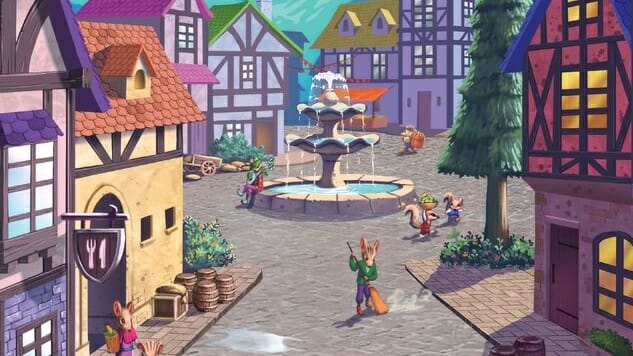The Chaotic City-Building Board Game Tiny Towns Puts You at Your Opponents’ Mercy

Tiny Towns is a citybuilder that gets away from the usual trappings of many Eurogames, where you collect wood and stone and bricks (so, so much wood, and stone, and brick) so you can build stuff. There are resources in Tiny Towns, but instead of collecting piles and piles of cubes in various colors, you’ll just get one cube on each player’s turn, and instead you’ll try to place them on your 5×5 board to match various patterns so you can score more points by game-end. It’s a wide-open game that gives you a ton of choices when play begins, but also gives you the chance to completely box yourself in if you don’t get the resources you need or fail to leave yourself enough space on the board. The result feels a little like Tetris (or games that follow that pattern, like Patchwork or Bärenpark), and a little like the city-builder Quadrapolis, but plays really quickly and puts you more at the mercy of your opponents’ choices.
In every game of Tiny Towns, players will be able to build seven different buildings on their boards—the Cottage is always available, and the other six will vary from game to game, with four choices of buildings in each of six types. The five resources are always the same, but each building has a unique shape and set of resources required to build it. The Cottage, for example, requires that you place a wheat, a glass, and a brick on three contiguous squares on your board to form a right angle. Once you’ve done that, you immediately take a Cottage token, place it on any of those three squares, and remove the resources from your board—which means two of those three spaces are now free for you to use for future buildings. Buildings can take anywhere from two to six resources to build, and you can’t remove a resource once you’ve placed it unless you’ve completed a building.
The catch is that you must take the resources other players choose on their turns, so the more players you have in a game of Tiny Towns, the less control you have, meaning the game is a totally different experience with two players than it is with four or more. On your turn, you name a resource, and every player takes one cube of that resource and must place it, even if they don’t want to do so. With two players, it’s a modest inconvenience, but as the player count rises, it becomes a serious nuisance. You will end up getting resources you don’t want, and have to plan around this inevitability. Two players can play Tiny Towns and chase entirely different buildings and strategies without too much trouble, but with more players, you need to consider what other players might be trying to do and see if you can play along so you don’t end up with a board full of stone you can’t use.
-

-

-

-

-

-

-

-

-

-

-

-

-

-

-

-

-

-

-

-

-

-

-

-

-

-

-

-

-

-

-

-

-

-

-

-

-

-

-

-









































